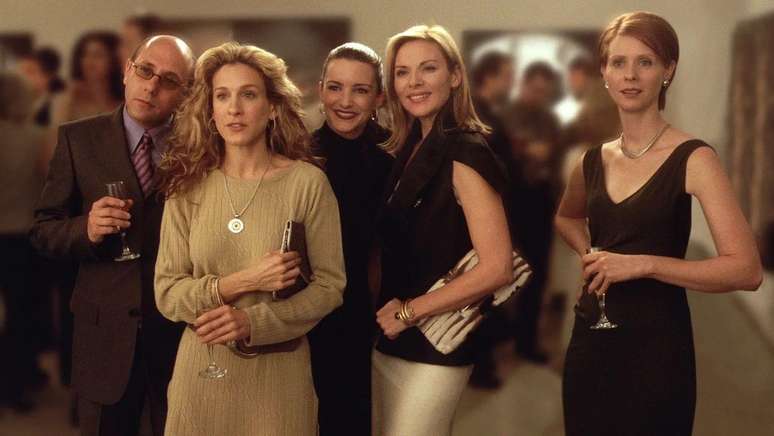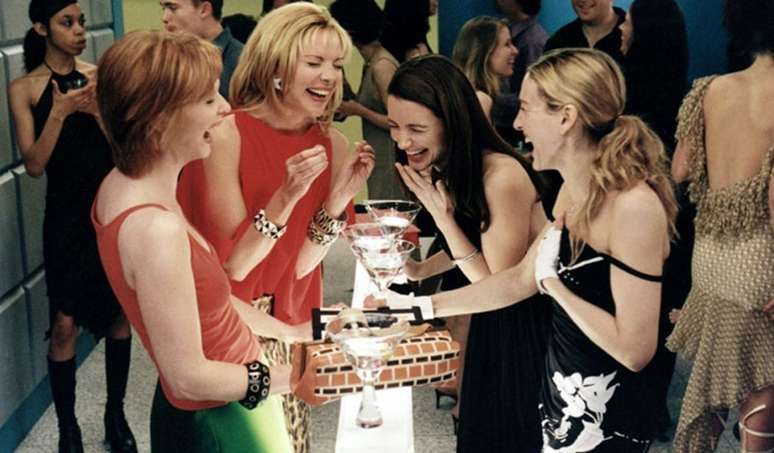An HBO original, the series arrived on Netflix and quickly rose to the top of the most watched series – what’s it like watching it today?
-
BY PARTICIPATING

Revisiting Sex and the City 26 years later
-
BY PARTICIPATING

Baby Rena: behind the success of the miniseries
-
BY PARTICIPATING

Remember Wagner’s career from Brazil to Hollywood
More than two decades after its debut, “Sex and the City” continues to be a cultural phenomenon, sparking new interest, especially among Generation Z, now that it has arrived in the Netflix catalog.
Released in 1998, “Sex and the City” revolutionized the way television series depicted women and their relationships. Carrie, played by Sarah Jessica Parker, is a journalist who openly discusses the love and sex lives of women in New York, challenging the norms of the time with frank conversations on topics considered taboo.
However, it has been interesting to observe how many people, who were not even born at the time the series began appearing on TV, now watch it with a certain revisionism of the problematic content – ignoring, in a sense, the context of the moment which it was transmitted. creation.
With this in mind, I decided to rewatch the first season with fresh eyes and understand what happens between the enthusiasm of the new generation and the nostalgia of the last generation.
Episode 1: An Introduction to Carrie’s Life

In the first episode, we meet Carrie Bradshaw, a journalist writing about the complexities of being a single woman in New York in the late ’90s. The series begins with a bold narrative about sex and relationships, an approach that was revolutionary in the era. What attracts the most attention is the unconventional presentation of the characters, especially the male ones, who are portrayed through common social stereotypes.
The narrative is also very compelling, so much so that it feels like seeing Carrie’s column come to life on the screen, complete with interviews, analyzes and personal opinions of the protagonist.
Episode 2: Beauty Standards and Self-Image

The second episode introduces “modelerengos”, men who are only interested in women who meet a rigid standard of beauty. This episode highlights the destructive influence of media aesthetic standards on female self-esteem, and reveals how even the protagonists, considered outside the standards of the time, challenge these norms.
Sure, there are problematic issues, like the character who appears in this very episode only to talk about sexual intercourse he filmed without consent and isn’t even questioned – but, again, it’s something that makes us think about how we move forward as a society in representing certain behaviors in fiction and in the audiovisual sector in general.
Episode 3: The Difference Between Single and Married

In the third episode, Carrie begins a column exploring how single women are viewed and treated differently than married women, both in social and family contexts. The episode delves into discussion about the stigma surrounding single women and how it impacts their social interactions and perception of themselves.
Here we begin to see more incisive commentary on women’s dilemmas at the turn of the millennium. While some of her stories are considered dated or less progressive by today’s standards, it is essential to recognize the role she played in bringing topics that were rarely discussed openly to the general public.
In this regard, it is not necessary to review the entire season to understand how the work offers a valuable social overview of what it meant to be a woman in the 1990s and early 2000s, in an era in which many of the debates on genre that are common today, were just getting started.
Sex and the City challenged norms, pioneered new forms of dialogue about femininity, and helped shape current conversations about gender equality and sexuality.
The series is worth revisiting today as a starting point for important discussions about how the media and its representations of the female imagination influence social expectations. Sometimes something may seem dated, but in art the idea is often this: talk about a generation and encapsulate it in an episodic format.
Source: Terra
Rose James is a Gossipify movie and series reviewer known for her in-depth analysis and unique perspective on the latest releases. With a background in film studies, she provides engaging and informative reviews, and keeps readers up to date with industry trends and emerging talents.







